|
鉴于人肝细胞原代培养在药物代谢、毒性、副作用的研究中被视为核心检验标准,而原代培养的肝细胞经常面临诸如解毒基因表达量下调的问题(如膜转运蛋白、结合酶、细胞色素P45),在Vinci B等人的肝细胞研究中(Vinci B, et al. Modular bioreactor for primary human hepatocyte culture: medium flow stimulates expression and activity of detoxification genes. Biotechnol J. 2011; 6: 554-64),认为正是传统静置培养无法模拟的某些生理刺激,引发了基因表达的下调。而Vinci B通过Quasi Vivo流动培养人原代肝脏细胞后,不论基因表达量、酶活还是生物参数,均证明流动培养可特异性地上调多种解毒酶基因的表达,而且流动培养的人贴壁肝细胞,其解毒酶基因家族的表达水平接近或高于新鲜分离的肝脏细胞。
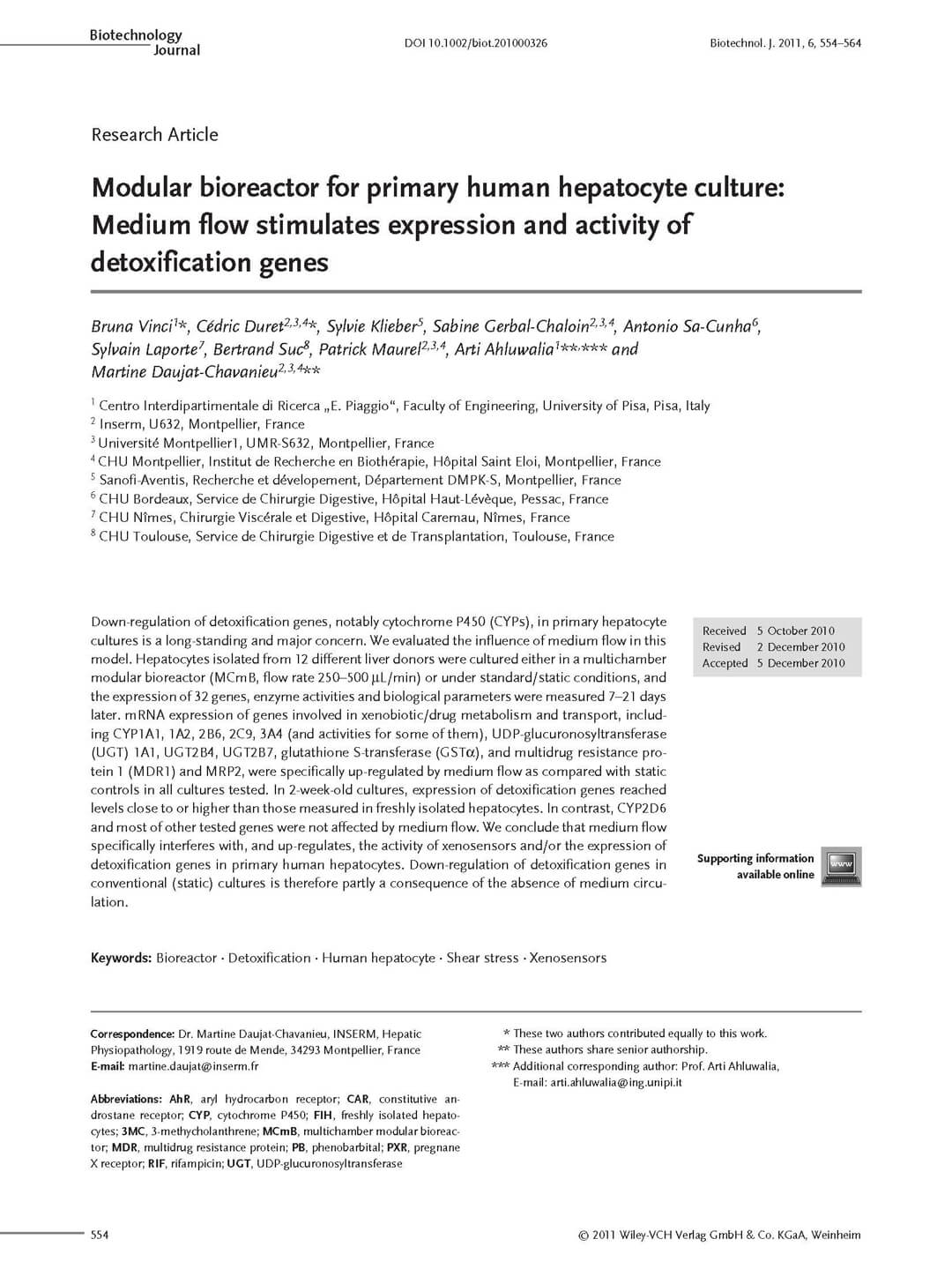
实验流程
1、将原代肝细胞进行静态培养,在第七天分组,一组保持静态培养,一组改为Quasi Vivo流动培养,继续培养至二十一天,进行检测。
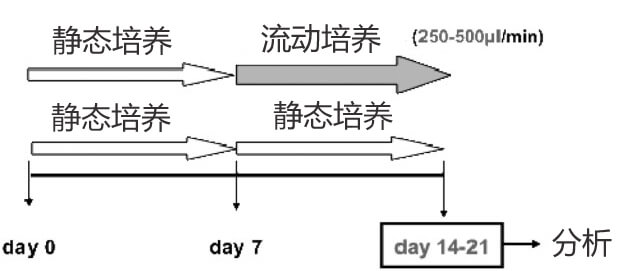
2、分别进行流动培养、静态培养、标准培养十四天后的肝脏细胞(FT297),形态无差异
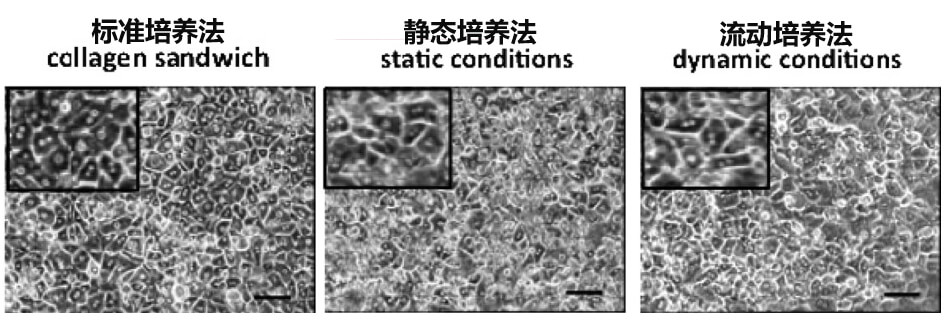
3、流动培养下的肝细胞CYP1A1、CYP1A2、CYP2B6、CYP3A4、GSTa等解毒酶基因表达更高,到达峰值时长有差异。





4、多种解毒基因上调,CYP1A1等基因表达甚至高于新鲜分离的肝脏细胞(FIH)
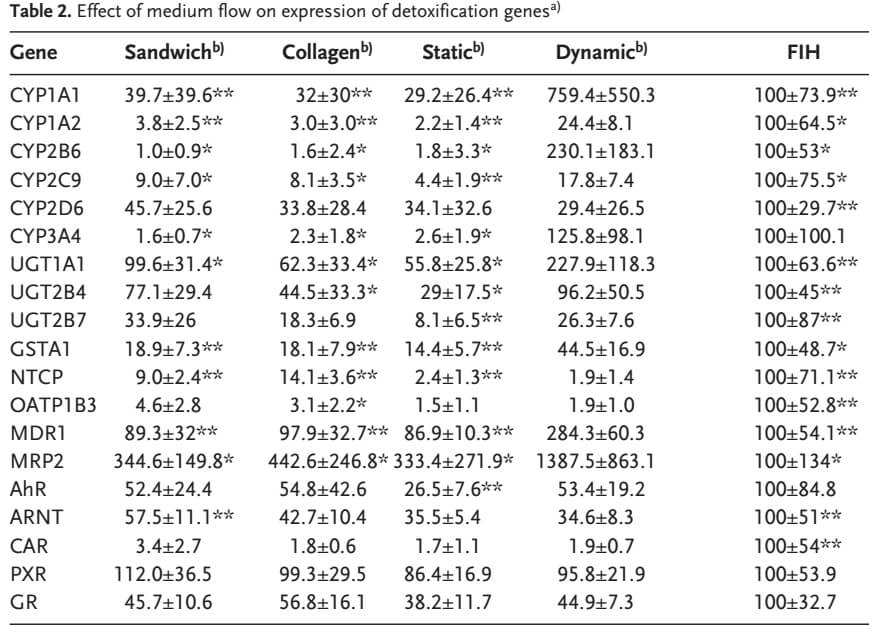
5、流动培养提高了肝脏细胞CYP3A4、UGT2B4/7、CYP2C9的活性,化合物代谢速率显著提高。

文章小结:
1、人原代肝脏细胞分别进行7-21天的流动培养、静态培养;
2、检测肝脏细胞32个基因的表达量、酶活和生物参数;
3、使用流动培养可提高人贴壁肝脏细胞解毒基因表达:
①UGT(尿苷二磷酸葡萄糖醛酸转移酶)基因家族表达上调:UGT1A1/UGT2B4/UGT2B7;
②多药耐药相关蛋白1 (MDR1)和MRP2基因的mRNA的表达上调;
③外源物质/药物代谢和运输基因表达上调,并激活某些酶活性:CYP1A1/1A2/2B6/2C9/3A4;
④GST(谷胱甘肽S-转移酶)基因表达上调。
用于(贴壁)细胞培养的Quasi Vivo流动培养系统,利用培养基循环流动,模拟血流剪切应力环境,更贴近人肝脏细胞的体内环境,能促进原代肝脏细胞增殖、贴壁肝细胞的基因表达等。作为英国Kirkstall公司核心专利产品,Quasi Vivo流动培养系统创新地模拟了体内动态环境,并可同时结合3D培养构建细胞模型。流动培养系统主要由高精度蠕动泵(用于培养基循环流动)、特殊设计的培养腔室(低通量培养用、中-高通量培养用)耗材组成。Quasi Viv设备可自行拼装,操作方便,按产品说明书清洗和灭菌后,所有耗材可长期、重复使用,大大降低了Quasi Vivo的使用成本。
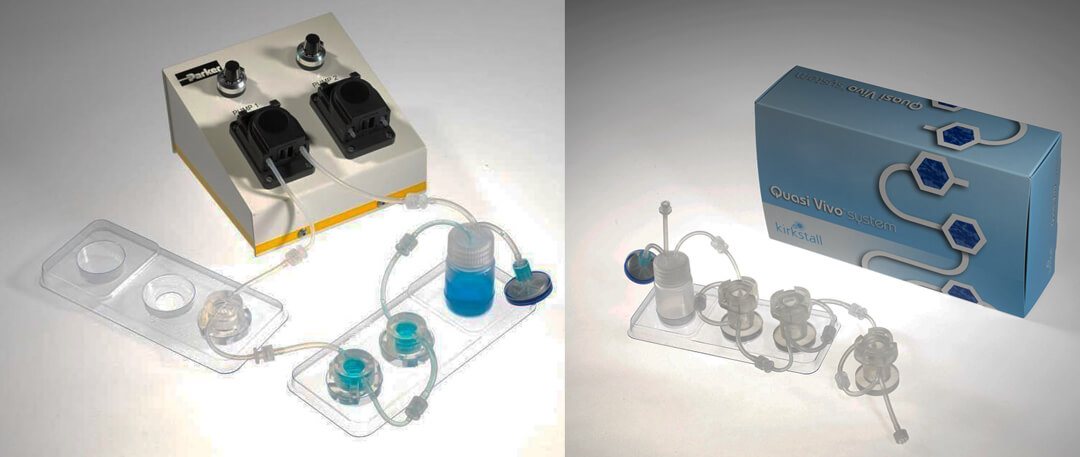
目前,Quasi Vivo流动培养系统已在全球超过70个专业研究机构获得应用,已成功构建包括呼吸系统(肺成纤维细胞、支气管上皮细胞等)、肝脏、肾脏、心血管、脑组织、糖尿病等研究模型(原代细胞模型)。

Quasi Vivo参考文献
1.Tommaso S. et al., 2011. Engineering Quasi-Vivo in vitro organ models. Advances in Experimental Medicine and Biology Volume: 745, pp 138-153.
2.Patricia M. et al., 2018. A novel dynamic multicellular co-culture system for studying individual blood-brain barrier cell types in brain diseases and cytotoxicity testing. Scientific Reports Volume: 8, Issue: 1, pp 8784.
3.Basma E. et al. 2020. A dynamic perfusion based blood-brain barrier model for cytotoxicity testing and drug permeation. Scientific Reports Volume: 10, Issue: 1, pp 3788.
4.Miranda A. et al., 2016. A three dimensional (3D) human in vitro blood-brain barrier (BBB). Heart Volume: 102.
5.Buesch S. et al., 2018. A Novel In Vitro Liver Cell Culture Flow System Allowing Long-Term Metabolism and Hepatotoxicity Studies. Applied In Vitro Toxicology Volume: 4, Issue: 3, pp 232-237.
6.Alec O. et al., 2019. Development of an in vitro media perfusion model of Leishmania major macrophage infection. 2019 PLOS ONE Volume: 14, Issue: 7.
7.Sean M. et al., 2017. In-silico Characterisation of the Kirkstall QV900 In-Vitro System for Advanced Cell Culture. 5th International Conference on Computational and Mathematical Biomedical Engineering pp 1174-1177.
8.Ahluwalia A. et al., 2011. Hepatotoxicity of diclofenac in a Quasi-Vivo™ multicompartment bioreactor. oxicology Letters Volume: 205.
9.Tomlinson, L. et al., 2019. In vitro liver zonation of primary rat hepatocytes.Front. Bioeng. Biotechnol., 7(17).
10.Elbakary, B. and Badhan R. K. S, 2020. A dynamic perfusion based blood brain barrier model for cytotoxicity testing and drug permeation. Scientific Reports, 10(1),3788.
11.O’Keefe, A. et al., 2019. Development of an in vitro media perfusion model of Leishmania major macrophage infection. Plos One, 14(7).
12.Miranda-Azpiazu, P. et al., 2018. A novel dynamic multicellular co-culture system for studying individual blood-brain barrier cell types in brain diseases. Scientific Reports, 8, 8784.
13.Chandorkar, P. et al., 2017. Fast-track development of an in vitro 3D lung/immune cell model to study Aspergillus infections. Scientific Reports, 7, 11644.
14.Iori, E. et al., 2012. Glucose and fatty acid metabolism in a 3 tissue in-vitro model challenged with normo- and hyperglycaemia. PLoS ONE, 7(4).
15.Mattei, G., Giusti, S. & Ahluwalia, A., 2014. Design Criteria for Generating Physiologically Relevant In Vitro Models in Bioreactors. Processes, 2(3).
16.Mazzei, D. et al., 2010. A low shear stress modular bioreactor for connected cell culture under high flow rates. Biotechnology and Bioengineering, 106.
17.Nithiananthan, S. et al., 2016. Physiological Fluid Flow Moderates Fibroblast Responses to TGF-β1. Journal of Cellular Biochemistry, 13.
18.Ramachandran, S.D. et al., 2015. In vitro generation of functional liver organoid-like structures using adult human cells. PLoS ONE, 10(10).
19.Rashidi, H. et al., 2016. Fluid shear stress modulation of hepatocyte like cell function. Archives of Toxicology, 90, 7.
20.Vinci, B. et al., 2012. An in vitro model of glucose and lipid metabolism in a multicompartmental bioreactor. Biotechnology Journal, 7.
21.Iori, E. et al., 2012. Glucose and fatty acid metabolism in a 3 tissue in-vitro model challenged with normo- and hyperglycaemia. PLoS ONE, 7(4), pp.1–9.
22.Mattei, G., Giusti, S. & Ahluwalia, A., 2014. Design Criteria for Generating Physiologically Relevant In Vitro Models in Bioreactors. Processes, 2, pp.548–569.
23.Mazzei, D. et al., 2010. A low shear stress modular bioreactor for connected cell culture under high flow rates. Biotechnology and Bioengineering, 106, pp.127–137.
24.Nithiananthan, S. et al., 2016. Physiological Fluid Flow Moderates Fibroblast Responses to TGF-β1. Journal of cellular biochemistry, 13(October), pp.1–13. Available at:
25.Ramachandran, S.D. et al., 2015. In vitro generation of functional liver organoid-like structures using adult human cells. PLoS ONE, 10(10), pp.1–14.
26.Rashidi, H. et al., 2016. Fluid shear stress modulation of hepatocytelike cell function. Archives of Toxicology, pp.3–7.
27.Iori, E. et al., 2012. Glucose and fatty acid metabolism in a 3 tissue in-vitro model challenged with normo- and hyperglycaemia. PLoS ONE, 7(4).
28.Vinci, B. et al., 2011. Modular bioreactor for primary human hepatocyte culture: Medium flow stimulates expression and activity of detoxification genes. Biotechnology Journal, 6, pp.554–564.
29.Tommaso S. et al., 2011. Engineering Quasi-Vivo in vitro organ models. Advances in Experimental Medicine and Biology Volume: 745, pp 138-153.
30.Ahluwalia A. et al., 2011. Hepatotoxicity of diclofenac in a Quasi-Vivo™ multicompartment bioreactor. oxicology Letters Volume: 205.
|